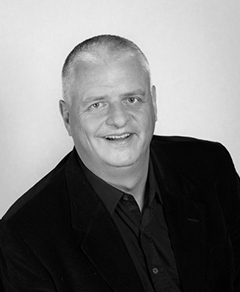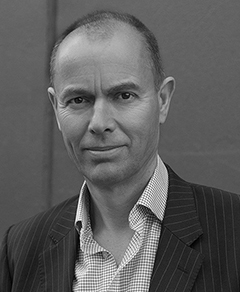Cheat Sheet I: Why you don't have to read Byron Sharp, Binet & Field, BJ Fogg, Daniel Kahneman et al to keep up with leading marketing and media science and effectiveness

Marketing graduates are challenged with their breadth of capabilities and understanding of applied marketing
The collected works of arguably the sharpest minds in marketing, consumer and media science require a shedload of reading time. For those too busy trying to keep their jobs to read the instruction manuals, this podcast and feature is for you. Volvo GM marketing Julie Hutchinson, KPMG partner Sudeep Gohil, AANA chief John Broome and Brand Traction's Jon Bradshaw get their geek on for an important - and fast - update on the leading global thinkers and thinking in marketing science and effectiveness and why it really matters.
There are dozens of marketing science books every marketer should probably have read. The problem is, everyone’s too busy and many of those tomes are not exactly light reading. Which means a lot of marketers are missing key insights uncovered by highly developed minds and which are based on decades worth of data. In blunt terms, they risk being less effective marketers because they haven’t done their homework.
“I get it, I used to be a marketing director. Life is way too busy to be reading text books,” says Jon Bradshaw, founder of consultancy Brand Traction and a marketing veteran of Diageo, Virgin Mobile and Lion. So last year, Bradshaw spent months reading and distilling marketing science theory into bite size chunks for everyone else.
“When we join the dots between everything that’s out there, we start to see some really interesting patterns and themes. To get to that point, unfortunately, you need to read. A lot.”

Jon Bradshaw, Principle, Brand Traction
Universal truths, Sharp insight
While wading through almost 30 major works – from Kahneman, Sharp, Binet and Field right through to Goldenberg, Mazursky, and Solomon – Bradshaw says he found some “universal truths” that if correctly applied, should enable marketers to shift more goods – rather than continually try to reinvent the wheel.
“What’s really interesting are the overlaps and crossovers between the various works,” writes Bradshaw in the introduction to the resulting report, When Great Minds Think Alike. “When we join the dots between everything that’s out there, we start to see some really interesting patterns and themes. To get to that point, unfortunately, you need to read. A lot.”
Yet for those that make even a partial effort, the rewards are demonstrable, says AANA chief executive, John Broome.
“I was given a copy of Sharp’s How Brands Grow when I was marketing director at Kellogg’s and I read it in an afternoon. Then I gave it to my customer insights manager and said, “Check out each of those lots that Byron is talking about against our Nielsen database.” It was absolutely in line, correct.”

AANA CEO John Broome
“Reading some of those books is like wading through molasses, it is not simple stuff,” says Broome. But some books are easier than others. Broome is a big fan of Byron Sharp, whose most widely known work underlines the importance of increasing penetration to attract more ‘light buyers’, or a bigger slice of the broader market.
“I was given a copy of Sharp’s How Brands Grow when I was marketing director at Kellogg’s and I read it in an afternoon. Then I gave it to my customer insights manager and said, “Check out each of those lots that Byron is talking about against our Nielsen database.” It was absolutely in line, correct,” says Broome.
“That gave great confidence to take it to the rest of management and say, “Look, what are the implications? Well, one plus reach is all we need to go after. We need to invest in creativity to create emotional affinity, to create mental availability. We need to invest in distribution to create that physical availability. The two combined adapt to saliency. We can measure saliency. We can track it and we can measure saliency in direct proportion to sales.” Everyone went “Hallelujah!” And that became a very, very simple way of decluttering the whole profession of marketing.”
“What I loved about Sharp was building the distinctiveness of a brand. Cars, more or less are the same. How do you build that distinctiveness in your brand so that it stands differently to the others in the marketplace? So we have been focusing a lot of effort on making Volvo as distinctive as we can.”

Volvo's Julie Hutchinson
Distinctiveness > differentiation
Julie Hutchinson, GM marketing at Volvo, also harnesses some of Sharp’s theories to drive growth, though she says it took her a little longer than Broome to crunch through How Brands Grow.
Hutchinson cites Sharp’s work on distinction over differentiation by way of example. In How Brands Grow, Sharp states: ‘Rather than striving for meaningful, perceived differentiation, marketers should seek meaningless distinctiveness. Branding lasts, differentiation doesn’t.’
“What I loved about Sharp was building the distinctiveness of a brand,” says Hutchinson.
“Cars, more or less are the same. How do you build that distinctiveness in your brand so that it stands differently to the others in the marketplace? So we have been focusing a lot of effort on making Volvo as distinctive as we can.”
An example, says Hutchinson, is Volvo’s ad voiceover.
“She’s Swedish. It makes sense that she’s Swedish, but it’s different, it’s distinctive. So when people hear Volvo, it’s something a little bit different. That’s the influence of Byron Sharp in terms of don’t worry about differentiation. Don’t worry about how many cup holders you have versus your competitor; worry about building those distinctive features and holding on to those and not being, I guess, challenged to change,” says Hutchinson. “Staying strong, staying the course over the long-term and building those assets around your brand.”
The long and short of it
Les Binet and Peter Field’s work around marketing effectiveness and long-term/short-term ratios has also started to penetrate. The two have shown, using thousands of campaigns, that on average across categories, a spend weighting of 60:40 brand to performance is optimal to drive growth.
That flies counter to the budget shift towards short-term performance channels locally and globally in recent years. But Broome, whose members represent billions of ad dollars, believes the pendulum is starting to swing back.
“We’re at the beginning of a change,” says Broome. “There is a realisation that a recalibration is required between long and short.”
Broome admits that the “smart minds are still at a point where they are trying to [recalibrate] by bringing the leadership room with them.” But he says there are now metrics throughout the funnel that enable marketers to give the boardroom “confidence that by investing in the long [term] they can still deliver the business outcome that they want.”
As such, Broome believes, “It’s the beginning. There has been a big shift to digital spend in the last few years. It is recalibrating back now.”
Think harder, longer
While Binet and Field’s work may be gaining traction, it should not be mistaken for a binary approach that simply requires marketers to blow budget on traditional big formats, suggests Sudeep Gohil.
Gohil was a planning director for many years before taking the helm at Droga5. Now a partner at KPMG, he says quality creative is the critical component of Binet & Field’s long view.
“When you read their work, the type of long is also important. It’s not just going “we made a brand ad”. Creativity becomes incredibly important, the emotional side becomes incredibly important,” says Gohil.
“So I think it’s worthwhile noting that it’s not as simple as ‘let’s do the long and short’. Let’s also put a lot of effort on the long because when you look at the great examples of long, they are so much better than the ones which are not good.”
“It’s very important that as intelligent as we are and can become in the world of marketing, that we remain human first and foremost and think about it from the perspective of how would a normal person look at this.”

KPMG partner, Sudeep Gohill
Short begets short
Gohil suggests that it is not ignorance of marketing rigour that has pushed many towards shorter-term decisions, but economic short-termism that for many marketers is everyday reality.
“Are we going to take the long view, which may or may not work but hopefully does,” he says, “Or are we going to take the short view and live to see another day?”
Meanwhile, Gohil suggests that some of the ideas contained within academic research “can come across as old fashioned, the stuff of textbooks, and as a result, people look at it and go, “Yes, but that’s not relevant for today”.
Throw in digital metrics and the justification for short-termism can begin to look convincing. The problem with taking only that approach, particularly for a new generation of native digital marketers, is that “you need to spend time upfront to understand why things happen,” says Gohil.
Read some books
While the panel unanimously recommends marketers download and digest Bradshaw’s When Great Minds Think Alike, Gohil also advises the next generation of marketing talent to “read some books” to try and ensure they see the bigger picture rather than over-specialising.
But he also urges marketers not to lose sight of the wood for the trees.
“It’s very important that as intelligent as we are and can become in the world of marketing that we remain human first and foremost and think about it from the perspective of how would a normal person look at this,” says Gohil.
“[Ensure that] right across the marketing department, you have this understanding of how human beings make decisions and test everything you do against that 95 per cent to five per cent test: Am I really talking to the lizard brain or not?”
Talk to the lizard brain
Of all the theories digested in researching When Great Minds Think Alike, author Jon Bradshaw thinks the work of Danny Kahneman, who won a Nobel prize for his work on how humans make choices, is perhaps the most overlooked within marketing.
“Right in the middle of Kahneman’s work is this notion that 95 per cent of the choices we make are made in an intuitive, instinctive, ‘short-cutted’ kind of fashion and only five per cent of the time are we engaging the cerebral cortex and having a kind of rational features, benefits, value equation conversation with ourselves,” says Bradshaw. “That kind of flies in the face of how marketing has traditionally built things like benefit ladders and communication structures and brands.”
As such, and if Kahneman is right that the way we choose what to buy is not usually a rationally considered purchase, Bradshaw thinks, “the best thing a brand can become is another heuristic shortcut for choice that allows the lizard brain just to go straight into buy mode”.
After all his reading, Bradshaw offers three key takeouts. The first is to ensure that “right across the marketing department, you have this understanding of how human beings make decisions and test everything you do against that 95 per cent to five per cent test,” he says. “Am I really talking to the lizard brain or not.”
Bradshaw says the second is to segment the brand plan into three buckets: What am I doing to drive motivation to get people to want my product? What am I doing to drive ease? How am I making my thing easier to get all of them to use? And what am I doing with triggers, what am I doing to get them to pick my one versus their one?
Third, says Bradshaw is read Binet and Field and properly apply their findings – across both long and short term.
“Try and get yourself 60 per cent plus into longer term penetration building, attraction of new users and 40 per cent making sure you hit your targets and deliver your numbers this quarter,” says Bradshaw.
“Otherwise, you won’t have a job.”
Jon Bradshaw read all the important marketing science tomes so you don’t have to. Get the white paper, When Great Minds Think Alike by emailing info@brandtraction.com.au.

